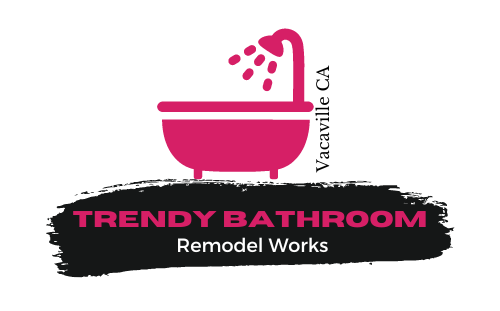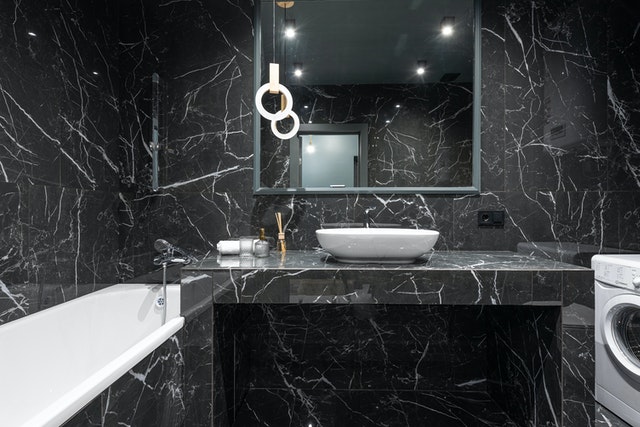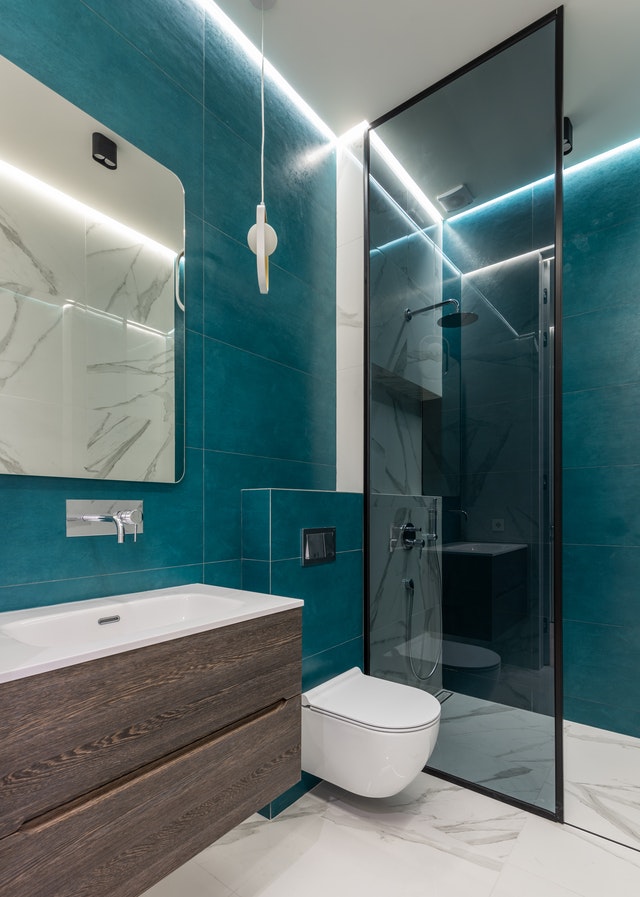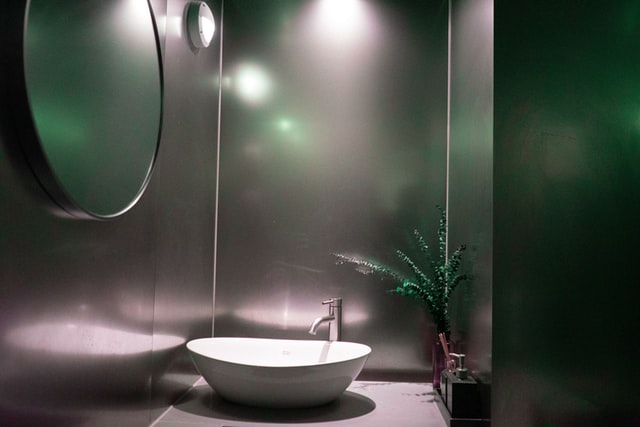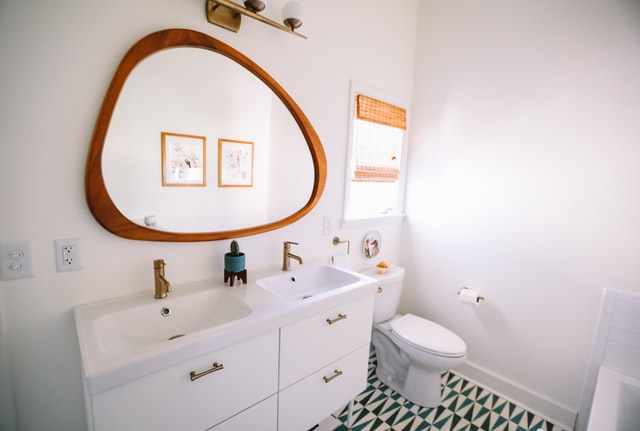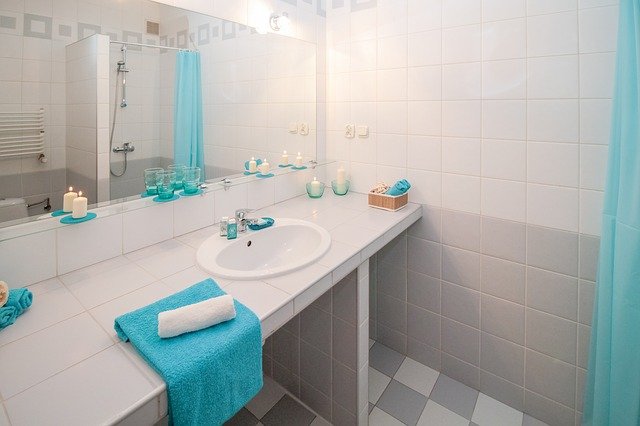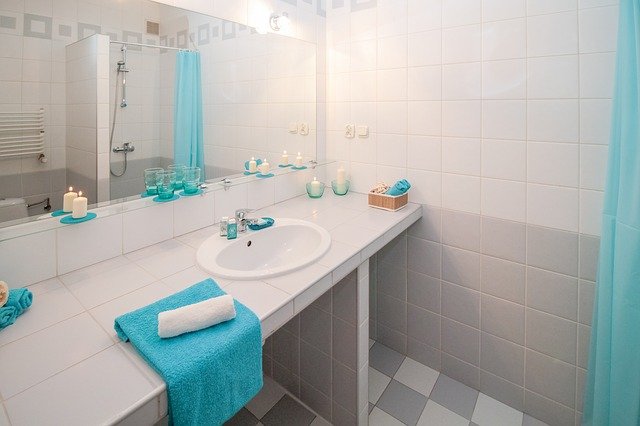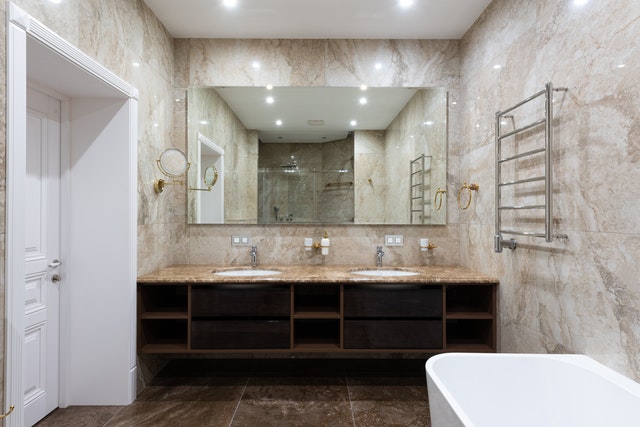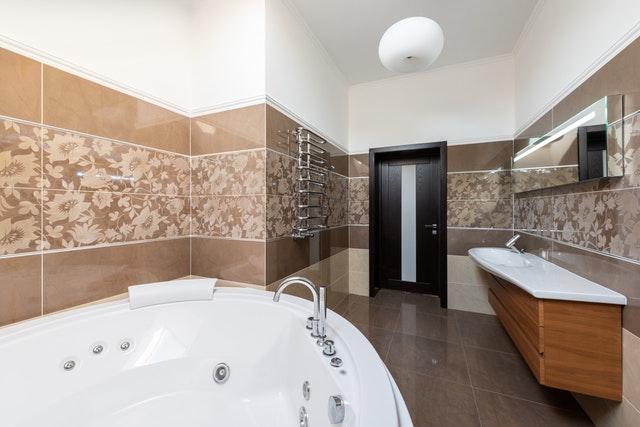Bathroom Lighting
Bathroom Lighting
This is an excerpt from the Book called “Design Ideas for Bathrooms” by Upper Saddle River, New Jersey. Continue reading to learn more about Bathroom Lighting, thanks to the author.
Get Stylish
Light and Air
In today’s bigger, more beautiful baths, lighting is more important than ever. For the small unimaginative bathrooms of days gone by, a ceiling light and maybe a fixture over the sink were enough to do the job. But today, bath designers and other experts recommend a layered approach to lighting. Start with some daylight via windows or skylights that open to provide ventilation as well as light. Then add a dose of pleasant artificial light that enhances the sunshine and illuminates the whole room at night. Don’t forget: you’ll need task lights for efficiency and safety in bathing and grooming areas.
- Natural light
- Artificial lighting
- Ventilation
Natural light
Remodeling a bathroom often includes removing the small original windows and opening up the space with larger windows. Or you can add a skylight to flood the area with natural light without worrying about privacy issues or using up valuable wall space in a small room.
Whether you are remodeling an old bath or building a new one, pay attention to the variety of options you have for incorporating windows. You will want to get one that looks best with the rest of the room, of course, but don’t forget to consider energy efficiency. Today’s windows and skylights are better sealed than those produced in the past. Construction is tighter, so there is reduced air infiltration around the frames. Multiple panes, improved coatings, and gas-filled spaces between panes can reduce both heat loss and unwanted heat gain. Some coatings filter out ultraviolet rays. When shopping, always consider your climate and the window’s orientation.
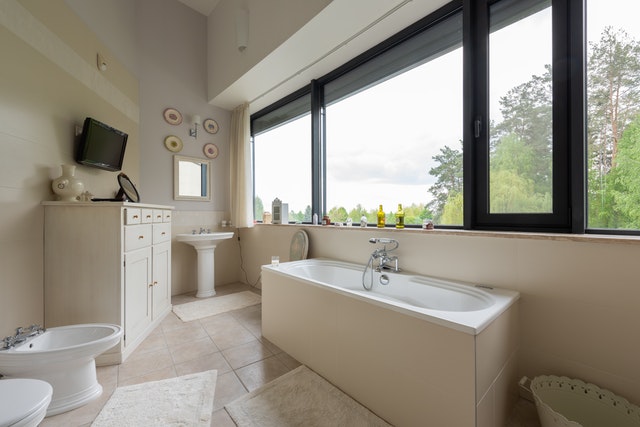
Window types
Windows can be fixed (meaning you can’t open them) or operable. Glass block is an example of a fixed window, but even clear-glass framed panels can be fixed. These windows let in light and views, but they don’t admit air. Examples of operable window types include double-and single-hung windows.
Double-hung windows have both an upper and lower sash that ride up and down in their own channels.
Single-hung windows are like double-hung units except that only their lower sash moves.
Awning windows are hinged horizontally to swing in or out.
Skylights And Roof Windows
If you don’t have access to a window, investigate a vented skylight or a roof window. Skylights supply up to 30 percent more light than vertical windows, and they also make the room feel larger. In a house with an attic, you can even install a shaft or tunnel that makes it possible to bring light and air from an operable skylight or roof window into a bathroom. Best of all, many of the newer models work by remote control for maximum, convenience and ease of operation.
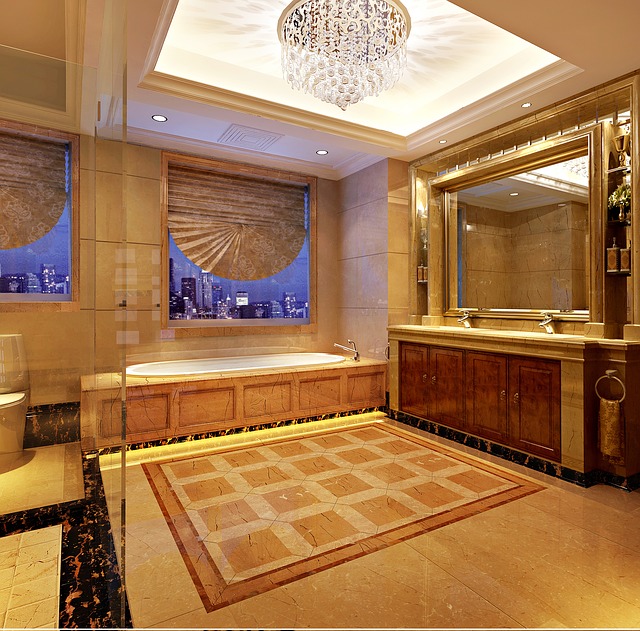
Artificial Lighting
Good lighting provides adequate illumination and enhances the look and feeling of the space it brightens. It also increases safety. There are several types of artificial lighting. It’s wise to include all of them in your plans for a new bath. The first, ambient lighting, is the general illumination that is required for any room. The optimum number and location of general light sources (fixtures) depends upon the size of the room. The second type, task lighting, is what you need for grooming. To look good in the mirror, task lighting should come at you from both sides, radiating from the middle of your face (about 60 to 66 inches from the floor for most adults). Avoid lighting the vanity area from above, which will cause shadows. The third type, accent lighting, isn’t necessary in a bathroom, but it can add a decorative touch. Small strip lights or compact spotlights mounted inside a glass-door cabinet, under the mirror, beneath a raised tub, or recessed into a soffit above the vanity are excellent examples. They don’t give off a lot of light, just enough to create a mood.
How much do you need?
In all but the tiniest of bathrooms, ceiling-mounted lamps are necessary for sufficient general illumination. A good choice is recessed lighting. How much you need. Of course, depends on the size of the room. If the bathroom is less than 100sq. ft., one fixture is sufficient. Add another fixture for each additional 50 sq. ft. If the surfaces around the room are light-absorbing dark hues, such as mahogany-stained cabinets, deep-colored walls, or black granite countertops, you may have to compensate with stronger lamps. If the bulbs you are using are not providing enough general light, you need to substitute them with ones that have more lumens, not with higher-wattage bulbs. The next time you shop for bulbs, read the packaging, which indicates the lumens per watt (LPW) produced by a bulb.
Lighting for mirrors
You’ll need even, shadow-free lighting for applying makeup shaving or caring for hair it should illuminate both sides of the face under the chin, and the top of the head. Plan to use at least 20 incandescent watts. Never aim lighting into the mirror. Decorative scones installed on either side of a small mirror at face height do the job nicely. Place them no higher than 60 in. above the floor and at least 28 in but not more than 60 in apart, unless you pair them with another vanity light source.
If florescent side lights are mandated by your local code, use the deluxe warm. white fluorescent bulbs that more close resemble natural light. Install them up to 48 in. apart for sufficient lighting and supplement them with recessed or surface/mounted ceiling fixtures. A large mirror used over a double vanity will require a different approach: treat each lav as a separate task area and light each one
Lighting for tubs and showers
Light around the tub and shower area has to be bright enough for safety and grooming. Adjusting water temperature or showerheads and reading (if you care to read while you soak in the tub). Recessed downlights or any other fixtures designed glare, and shatter-resistant white acrylic diffusers are the safest. Any light fixture installed in a wet or damp area has to be protected property so that water cannot accumulate in wiring compartments, lamp holders or other electrical parts. Your professional electrician will know how to handle the situation and can recommend the proper light fixture.
Types Of Bulbs
Here’s a description of the most common types of bulbs and their advantages and disadvantages.
Incandescent. Like sunlight, incandescent bulbs emit “continuous spectrum light,” or light that contains every color. Illumination from these bulbs, in fact, is even warmer than sunlight, making its effect very appealing in a room. It makes our skin tones look good and even enhances our feeling of well-being. The drawbacks to incandescent bulbs are that they use a lot of electricity and produce a lot of heat. However, they come in a variety of shapes, sized, and application. (One type features a waterproof lens cover that makes it suitable for over a tub or inside of a shower.) These bulbs can be clear, diffuse, tinted, or colored, and they may have a reflective coating inside.
Fluorescent. These energy-efficient bulbs cast a diffuse, shadow less light that makes them great for general illumination. They are very energy efficient, but the old standard fluorescents are quite unflattering, making everything and everyone appear bluish and bland. Newer warm-white fluorescent bulbs render color in a way that more closely resembles sunlight. Fluorescents are available both in the familiar tube versions and in compact styles. In some parts of the country, local codes require florescent lights to conform to energy conservation mandates.
Halogen. This is actually a type of incandescent lamp that operates at greater energy efficiency. It produces brighter, whiter light at a lower wattage. One disadvantage is a higher price tag. However, although halogens cost more up front, they last longer than conventional incandescents. Because a halogen bulb produces a higher heat output that other incandescent, it requires a special shielding. The low voltage version of halogen bulbs produces a 50 percent brighter light than standard halogen bulbs. These are compact and use less electricity, which makes them more energy efficient, too.
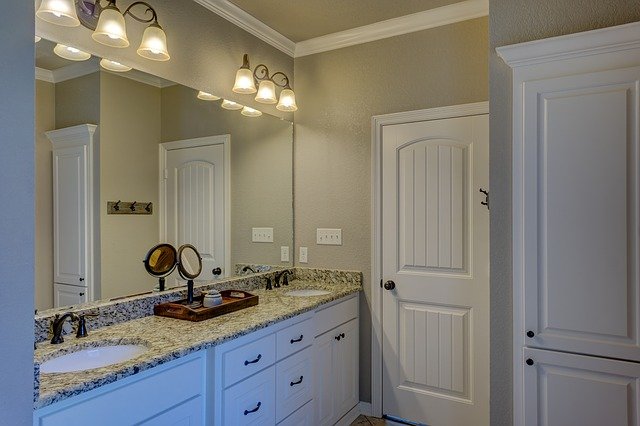
Xenon. Like halogens, xenon bulbs—frequently used in auto headlights—can be compact and produce a bright, white light that is very true to sunlight. But unlike halogens, which produce a lot of heat and emit harmful ultraviolet (UV) rays, xenon bulbs have low-heat out output, making them more energy efficient.
Ventilation
Adequate ventilation is a must in any humid environment, and you can’t get much more humid than the modern bathroom retreat. Those fabulous home-spa features use more water than standard fixtures, raising the humidity level in the bathroom accordingly. The only solution is a good ventilation system. Ventilation combats the steam and condensation that causes mildew, rot, and deterioration of the bathroom’s surfaces and the surrounding rooms or exterior walls of the house. If you haven’t installed a proper moisture barrier between the bathroom and the exterior wall, you may face serious structural damage in addition to peeling and chipping paint. If you install glossy ceramic, stone, or glass tiles on bathroom surfaces, your ventilation needs are greater than if you installed an absorbent material, such as cork. (Unfortunately, many absorbent materials aren’t appropriate for the bathroom because they can decay and spread bacteria.) Even glossy paints can resist absorption and create problems with mold and mildew. Beyond concerns for bathroom surfaces and structural elements. Imagine the air quality in a stuffy and unventilated bathroom. Noxious fumes released into the air by cleaning solutions and grooming products, including hair spray and nail polish, pose a health risk. The most common side effects of this indoor air pollution include eye, nose, and throat irritation. Not exactly the kind of picture you had in mind when you dreamed of creating a relaxing, sybaritic haven in your new bathroom.
Types of ventilation
There are three types of ventilation systems available for installation in a residential bathroom.
A recirculating fan. As its name implies, a recirculating fan simply moves the air around in the room. It does not vent air to the outdoors, but it does help to dispel some of the moisture that has accumulated on surfaces during bathing.
A ducted system. A ducted ventilation system discharges humidity in the bathroom by removing moist, stale air and odors and venting them through ductwork to the outdoors. Some of the latest options offered by manufacturers of bathroom fans include remote-location units, built-in lighting, units that include heaters multiple speeds, quiet operation, and an automatic-on feature that is triggered by a device that senses high levels of humidity.
Room exhaust fans. Separate exhaust fans mount anywhere on a ceiling or outer wall of a new bathroom. The main thing is to connect the fan to the outside via a vent cap on the roof or sidewall. To remove moist air and odors effectively from a bathroom, you need to match the fan capacity to the room’s volume. Ventilating fans are sized by the number of cubic feet of air they move each minute (cfm). A fan should change all of the room’s air at least eight times each hour. For 8-ft. ceilings, the following formula can help determine what you need.
Fan capacity (cfm) =Room Width (ft.) * Room Length (ft.) *1.1
Fans are also rated in “Sones” for the amount of noise they produce. A fan rated at 1 sone, the quietest, is about as loud as a refrigerator.
